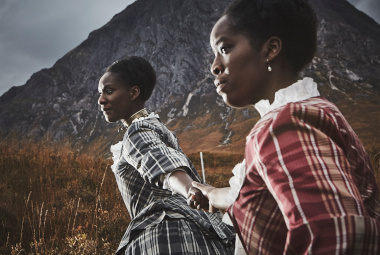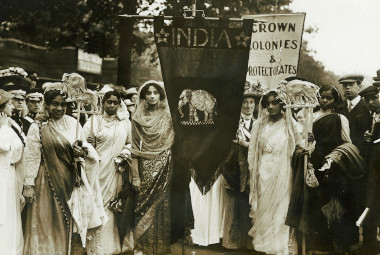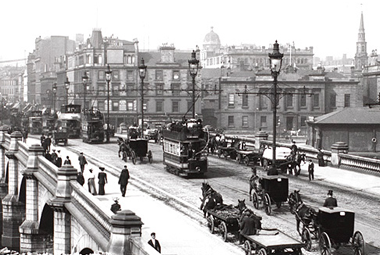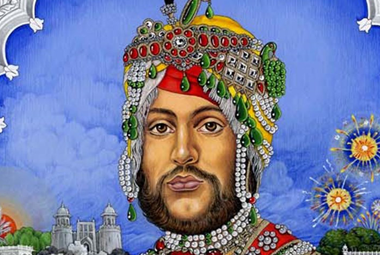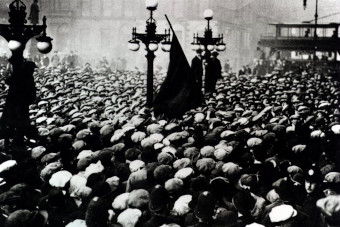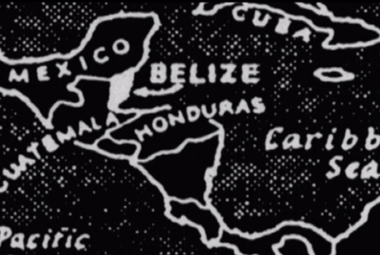
A new chapter in Scotland's history
Scotland needs a coherent way of telling history on a meaningful and engaging platform through curiosity, education and a reflection on our past. This space presents the realities of Scotlands role in empire, colonialism, slavery and migration.

Black Minstrelsy in Scotland
On the 10th June 1839 the ‘father of American Minstrels’ Thomas ‘Daddy’ Rice – made his first appearance on the stage of the Adelphi Theatre in Broughton Street, Edinburgh.

"It wisnae us"
Walking trail of Glasgow's built heritage, tobacco, the slave trade and abolition.

The tree fellers
Explores the story of the British Honduras Forestry Unit who were seconded to Scotland during WWII. The history of these 'tree-fellers' begins with the rise of mahogany as a luxury commodity and the subsequent colonisation of Belize. The legacy of the 900 Belizean lumberjacks continues in contemporary Scotland.

Rice, Scotland and slavery
Explores Scottish merchant Richard Oswald's slave trading business in Sierra Leone, its ties to the coastal plantations of South Carolina and Georgia and the descendants of these enslaved people and the crop at the center of it all; rice.
Introduction to the Historical Context of 1745: Reconstituting the lives of the enslaved from the archival evidence
read more
This image of Indian women is symptomatic of one of the arguments that British suffragists and suffragettes put forward for the female vote. The issue of Indian women (or other racialised women) who might vote in Britain was not being raised.
read more
Walking trail of Glasgow's built heritage, tobacco, the slave trade and abolition.
read more
Patrons of the museum
This museum is brought to you thanks to our generous benefactors through generous donations of time and support.
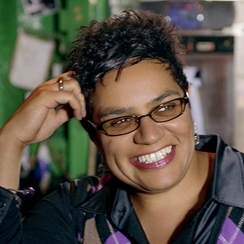
Jackie Kay
Scotland’s Makar, Jackie Kay has moved from marginal voice to national treasure. Throughout her widely-ranging career - encompassing poetry, plays, children’s writing, short stories, prose and the novel – her work has continued to gravitate around key themes of identity, and the importance of poems and stories as affirmations both of individuality and of human connectedness.
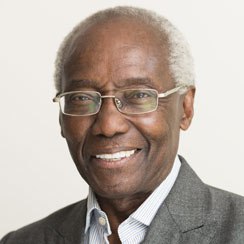
Professor Sir Geoffrey Palmer
Professor Sir Geoff Palmer is the author of many scientific papers and has published books on grain science and the history of Slavery in the West Indies. He is the Freeman of Midlothian and the Honorary Consul for Jamaica in Scotland. Geoff was knighted in 2014 for his contributions to science, charity and human rights.
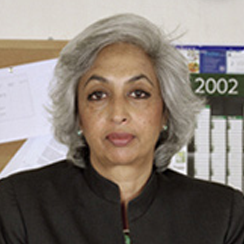
Kaliani Lyle
Kaliani Lyle is currently Deputy Chair of the Poverty and Inequality Commission.
She has been the Chief Executive Officer of two charities: Citizens Advice Scotland, from 1998 to 2010, and the Scottish Refugee Council (1995 to 1998). She also worked for Edinburgh District Council as their first Race Relations Officer.
Museums Decolonised
The Other Perspective
As the last ruler of the Sikh Empire, Duleep Singh was deposed from the throne by the East India Company and exiled to Britain.
read more
Battle of George Square, however first recorded race riots in Scotland took place 3 days prior.
read more
The story of the 900 British Honduran foresters who came to Scotland in 1942 (from what is now Belize) to help defeat fascism and decided to stay. Welcomed by most they still faced hostility and racism from a few.
read more
